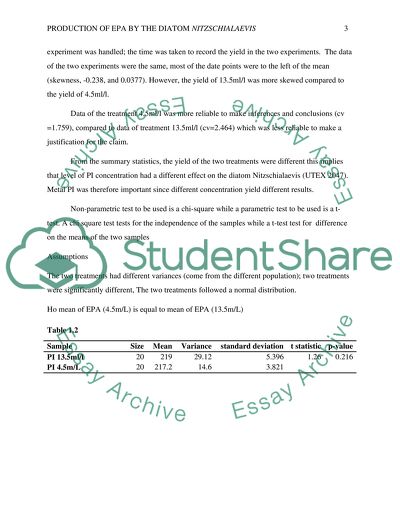Cite this document
(“Production of EPA by the Diatom Coursework Example | Topics and Well Written Essays - 1500 words”, n.d.)
Production of EPA by the Diatom Coursework Example | Topics and Well Written Essays - 1500 words. Retrieved from https://studentshare.org/health-sciences-medicine/1702322-optimisation-of-the-heterotrophic-production-of-epa-by-the-diatom-nitzschia-laevis
Production of EPA by the Diatom Coursework Example | Topics and Well Written Essays - 1500 words. Retrieved from https://studentshare.org/health-sciences-medicine/1702322-optimisation-of-the-heterotrophic-production-of-epa-by-the-diatom-nitzschia-laevis
(Production of EPA by the Diatom Coursework Example | Topics and Well Written Essays - 1500 Words)
Production of EPA by the Diatom Coursework Example | Topics and Well Written Essays - 1500 Words. https://studentshare.org/health-sciences-medicine/1702322-optimisation-of-the-heterotrophic-production-of-epa-by-the-diatom-nitzschia-laevis.
Production of EPA by the Diatom Coursework Example | Topics and Well Written Essays - 1500 Words. https://studentshare.org/health-sciences-medicine/1702322-optimisation-of-the-heterotrophic-production-of-epa-by-the-diatom-nitzschia-laevis.
“Production of EPA by the Diatom Coursework Example | Topics and Well Written Essays - 1500 Words”, n.d. https://studentshare.org/health-sciences-medicine/1702322-optimisation-of-the-heterotrophic-production-of-epa-by-the-diatom-nitzschia-laevis.


